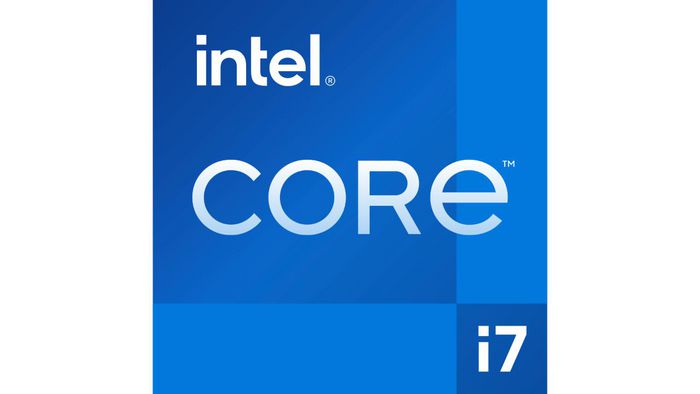- Startseite
- Server-, Computer- und Druckerersatzteile
- Server & Computer
- PC-Komponenten
- CPUs
- Intel Intel® Core™ i7-12700K Processor (25M Cache, up to 5.00 GHz) – BX8071512700K
Intel Intel® Core™ i7-12700K Processor (25M Cache, up to 5.00 GHz)
MPN BX8071512700K
Artikel-Nr. W126583622
EAN / UPC 735858498920
Lagerbestand
Intel® Trusted Execution Technology
Intel® Trusted Execution Technology for safer computing is a versatile set of hardware extensions to Intel® processors and chipsets that enhance the digital office platform with security capabilities such as measured launch and protected execution. It enables an environment where applications can run within their own space, protected from all other software on the system.
Intel® Virtualization Technology for Directed I/O (VT-d)
I...
Spezifikationen für BX8071512700K
Features
Ausfuhrkontrollklassifikationsnummer (ECCN)
5A992CN3
Commodity Classification Automated Tracking System (CCATS)
G167599
CPU-Konfiguration (max.)
1
Disable-Bit ausführen
Y/Yes
Eingebettete Optionen verfügbar
N/No
Marktsegment
Desktop
Maximum Anzahl von PCI-Express-Lanes
20
Nutzungsbedingungen
PC/Client/Tablet/Workstation
PCI-Express-Konfigurationen
1x16+1x4/2x8+1x4
Ruhezustände
Y/Yes
Skalierbarkeit
1S
Spezifikation der thermischen Lösung
PCG 2020A
Thermische Überwachungstechnologien
Y/Yes
Unterstützte Befehlssätze
AVX 2.0/SSE4.1/SSE4.2
Version der PCI-Express-Steckplätze
4.0/5.0
Graphics
Anzahl der Ausführungseinheiten
32
Anzahl der unterstützten Displays (On-Board-Grafik)
4
Diskrete Grafikkarte
N/No
Diskretes Grafikkartenmodell
Not available
Dynamische Frequenz der integrierten Grafikkarte (max.)
1500 MHz
Grundfrequenz der integrierten Grafikkarte
300 MHz
Integrierte Grafikkarte DirectX-Version
12.0
Integriertes Grafikkartenmodell
Intel UHD Graphics 770
Maximale Auflösung der integrierten Grafikkarte (DisplayPort)
7680 x 4320 Pixels
Maximale Auflösung der integrierten Grafikkarte (eDP - Integrated Flat Panel)
5120 x 3200 Pixels
Maximale Auflösung der integrierten Grafikkarte (HDMI)
4096 x 2160 Pixels
On-Board-Grafikkarten-Aktualisierungsrate bei maximaler Auflösung (DisplayPort)
60 Hz
Onboard-Grafikkarte
Y/Yes
Onboard-Grafikkarten-Aktualisierungsrate bei maximaler Auflösung (eDP - Integrated Flat Panel)
120 Hz
Onboard-Grafikkarten-Aktualisierungsrate bei maximaler Auflösung (HDMI)
60 Hz
OpenGL-Version der integrierten Grafikkarte
4.5
Logistics data
Code des Harmonisierten Systems (HS)
85423119
Memory
ECC
Y/Yes
Maximum interner Speicher, der vom Prozessor unterstützt wird
128 GB
Nicht-ECC
Y/Yes
Speicherbandbreite (max.)
76,8 GB/s
Speicherkanäle
Dual-channel
Vom Prozessor unterstützte Speichertypen
DDR4-SDRAM/DDR5-SDRAM
Operational conditions
Verbindung
100 °C
Other features
Grafikausgabe
eDP 1.4b, DP 1.4a, HDMI 2.1
Maximum interner Speicher
128 GB
Package dimensions
Gross Weight
0,3 kg
Processor
ARK-ID des Prozessors
134594
Basisleistung des Prozessors
125 Watt
Betriebsmodi des Prozessors
64-bit
Bustyp
DMI4
Codename des Prozessors
Alder Lake
Effiziente Core-Boost-Frequenz
3,8 GHz
Effiziente Kerne
4
Grundfrequenz des effizienten Kerns
2,7 GHz
Kasten
Y/Yes
Komponente für
PC
Kühler enthalten
N/No
Leistungskerne
8
Maximum Anzahl von DMI-Spuren
8
Maximum Turboleistung
190 Watt
Performance-Core-Boost-Frequenz
4,9 GHz
Performance-Core-Grundfrequenz
3,6 GHz
Prozessor-Boost-Frequenz
5 GHz
Prozessor-Cache
25 MB
Prozessor-Cache-Typ
Smart Cache
Prozessor-Threads
20
Prozessorfamilie
Intel® Core™ i7
Prozessorgeneration
12th gen Intel® Core™ i7
Prozessorhersteller
Intel
Prozessorkerne
12
Prozessormodell
i7-12700K
Prozessorsockel
LGA 1700
Vom Prozessor unterstützte Speicherbandbreite (max.)
76,8 GB/s
Processor special features
Bereit für Intel® Intel™ Speicher
Y/Yes
Eignung für die Intel vPro® Enterprise-Plattform
Y/Yes
Eignung für die Intel® vPro™-Plattform
Y/Yes
Intel
Y/Yes
Intel -Virtualisierungstechnologie (VT-x)
Y/Yes
Intel -Virtualisierungstechnologie für Directed I/O (VT-d)
Y/Yes
Intel Active-Management-Technologie (Intel AMT)
Y/Yes
Intel AES Neue Anweisungen (Intel AES-NI)
Y/Yes
Intel Bedrohungserkennungstechnologie (TDT)
Y/Yes
Intel Boot Guard
Y/Yes
Intel Clear-Video-HD-Technologie (Intel CVT HD)
Y/Yes
Intel Control-Flow-Enforcement-Technologie (CET)
Y/Yes
Intel Deep Learning Boost (Intel DL Boost)
Y/Yes
Intel Hyper-Threading-Technologie (Intel HT-Technologie)
Y/Yes
Intel One-Click-Recovery
Y/Yes
Intel OS Guard
Y/Yes
Intel Quick-Sync-Videotechnologie
Y/Yes
Intel Secure Key
Y/Yes
Intel Speed-Shift-Technologie
Y/Yes
Intel Stable Image Platform-Programm (SIPP)
Y/Yes
Intel Standard-Verwaltbarkeit (ISM)
Y/Yes
Intel Total Memory Encryption
Y/Yes
Intel Total Memory Encryption – Multi Key
Y/Yes
Intel Trusted-Execution-Technologie
Y/Yes
Intel Turbo-Boost-Max-Technologie 3.0
Y/Yes
Intel Turbo-Boost-Max-Technologie 3.0-Frequenz
5 GHz
Intel Turbo-Boost-Technologie
2.0
Intel Virtualisierungstechnik mit Umleitungsschutz (VT-rp)
Y/Yes
Intel Volume Management Device (VMD)
Y/Yes
Intel VT-x mit erweiterten Seitentabellen (EPT)
Y/Yes
Intel® Hardware Shield-Berechtigung
Y/Yes
Intel® Thread Director
Y/Yes
Verbesserte Intel SpeedStep-Technologie
Y/Yes
Product dimensions
Height (product,cm)
4,5 cm
Net Weight
0,19999999999999998 kg
Tiefe cm
11,7 cm
Width (product,cm)
10,3 cm
Technical details
Erscheinungsdatum
Q4'21
OpenCL-Version
2.1
Status
Launched
Zielmarkt
Gaming, Content Creation
Vendor information
Brand Name
Warranty
1 Jahre)
Weight & dimensions
Paketgröße des Prozessors
45 x 37.5 mm
Beschreibung
Intel® Core™ i7-12700K Processor (25M Cache, up to 5.00 GHz)
Intel® Trusted Execution Technology
Intel® Trusted Execution Technology for safer computing is a versatile set of hardware extensions to Intel® processors and chipsets that enhance the digital office platform with security capabilities such as measured launch and protected execution. It enables an environment where applications can run within their own space, protected from all other software on the system.
Intel® Virtualization Technology for Directed I/O (VT-d)
Intel® Virtualization Technology for Directed I/O (VT-d) continues from the existing support for IA-32 (VT-x) and Itanium® processor (VT-i) virtualization adding new support for I/O-device virtualization. Intel VT-d can help end users improve security and reliability of the systems and also improve performance of I/O devices in virtualized environments.
Intel® Virtualization Technology (VT-x)
Intel® Virtualization Technology (VT-x) allows one hardware platform to function as multiple “virtual” platforms. It offers improved manageability by limiting downtime and maintaining productivity by isolating computing activities into separate partitions.
Intel® 64
Intel® 64 architecture delivers 64-bit computing on server, workstation, desktop and mobile platforms when combined with supporting software.¹ Intel 64 architecture improves performance by allowing systems to address more than 4 GB of both virtual and physical memory.
Intel® Clear Video HD Technology
Intel® Clear Video HD Technology, like its predecessor, Intel® Clear Video Technology, is a suite of image decode and processing technologies built into the integrated processor graphics that improve video playback, delivering cleaner, sharper images, more natural, accurate, and vivid colors, and a clear and stable video picture. Intel® Clear Video HD Technology adds video quality enhancements for richer color and more realistic skin tones.
Cache
CPU Cache is an area of fast memory located on the processor. Intel® Smart Cache refers to the architecture that allows all cores to dynamically share access to the last level cache.
Intel® AES New Instructions
Intel® AES New Instructions (Intel® AES-NI) are a set of instructions that enable fast and secure data encryption and decryption. AES-NI are valuable for a wide range of cryptographic applications, for example: applications that perform bulk encryption/decryption, authentication, random number generation, and authenticated encryption.
Idle States
Idle States (C-states) are used to save power when the processor is idle. C0 is the operational state, meaning that the CPU is doing useful work. C1 is the first idle state, C2 the second, and so on, where more power saving actions are taken for numerically higher C-states.
Intel® Turbo Boost Technology
Intel® Turbo Boost Technology dynamically increases the processor's frequency as needed by taking advantage of thermal and power headroom to give you a burst of speed when you need it, and increased energy efficiency when you don’t.
Max Turbo Frequency
Max Turbo Frequency is the maximum single-core frequency at which the processor is capable of operating using Intel® Turbo Boost Technology and, if present, Intel® Turbo Boost Max Technology 3.0 and Intel® Thermal Velocity Boost. Frequency is typically measured in gigahertz (GHz), or billion cycles per second.
Execute Disable Bit
Execute Disable Bit is a hardware-based security feature that can reduce exposure to viruses and malicious-code attacks and prevent harmful software from executing and propagating on the server or network.
Intel® Hyper-Threading Technology
Intel® Hyper-Threading Technology (Intel® HT Technology) delivers two processing threads per physical core. Highly threaded applications can get more work done in parallel, completing tasks sooner.
Instruction Set
An instruction set refers to the basic set of commands and instructions that a microprocessor understands and can carry out. The value shown represents which Intel’s instruction set this processor is compatible with.
Intel® Quick Sync Video
Intel® Quick Sync Video delivers fast conversion of video for portable media players, online sharing, and video editing and authoring.
Intel vPro® Platform Eligibility
The Intel vPro® platform is a set of hardware and technologies used to build business computing endpoints with premium performance, built-in security, modern manageability and platform stability.
Intel® VT-x with Extended Page Tables (EPT)
Intel® VT-x with Extended Page Tables (EPT), also known as Second Level Address Translation (SLAT), provides acceleration for memory intensive virtualized applications. Extended Page Tables in Intel® Virtualization Technology platforms reduces the memory and power overhead costs and increases battery life through hardware optimization of page table management.
Intel® Optane™ Memory Supported
Intel® Optane™ memory is a revolutionary new class of non-volatile memory that sits in between system memory and storage to accelerate system performance and responsiveness. When combined with the Intel® Rapid Storage Technology Driver, it seamlessly manages multiple tiers of storage while presenting one virtual drive to the OS, ensuring that data frequently used resides on the fastest tier of storage. Intel® Optane™ memory requires specific hardware and software configuration.
Enhanced Intel SpeedStep® Technology
Enhanced Intel SpeedStep® Technology is an advanced means of enabling high performance while meeting the power-conservation needs of mobile systems. Conventional Intel SpeedStep® Technology switches both voltage and frequency in tandem between high and low levels in response to processor load. Enhanced Intel SpeedStep® Technology builds upon that architecture using design strategies such as Separation between Voltage and Frequency Changes, and Clock Partitioning and Recovery.
Secure Key
Intel® Secure Key consists of a digital random number generator that creates truly random numbers to strengthen encryption algorithms.
Intel® Speed Shift Technology
Intel® Speed Shift Technology uses hardware-controlled P-states to deliver dramatically quicker responsiveness with single-threaded, transient (short duration) workloads, such as web browsing, by allowing the processor to more quickly select its best operating frequency and voltage for optimal performance and power efficiency.
Intel® Deep Learning Boost (Intel® DL Boost) on CPU
A new set of embedded processor technologies designed to accelerate AI deep learning use cases. It extends Intel AVX-512 with a new Vector Neural Network Instruction (VNNI) that significantly increases deep learning inference performance over previous generations.
Instruction Set Extensions
Instruction Set Extensions are additional instructions which can increase performance when the same operations are performed on multiple data objects. These can include SSE (Streaming SIMD Extensions) and AVX (Advanced Vector Extensions).
Intel® Turbo Boost Max Technology 3.0 Frequency
Intel® Turbo Boost Max Technology 3.0 identifies the best performing core(s) on a processor and provides increased performance on those cores through increasing frequency as needed by taking advantage of power and thermal headroom. Intel® Turbo Boost Max Technology 3.0 frequency is the clock frequency of the CPU when running in this mode.
Intel® Turbo Boost Max Technology 3.0
Intel® Turbo Boost Max Technology 3.0 identifies the best performing core(s) on a processor and provides increased performance on those cores through increasing frequency as needed by taking advantage of power and thermal headroom.
Intel® Total Memory Encryption
TME – Total Memory Encryption (TME) helps protect data against exposure via physical attack on memory, such as cold-boot attacks.
Thermal Monitoring Technologies
Thermal Monitoring Technologies protect the processor package and the system from thermal failure through several thermal management features. An on-die Digital Thermal Sensor (DTS) detects the core's temperature, and the thermal management features reduce package power consumption and thereby temperature when required in order to remain within normal operating limits.
Intel® Volume Management Device (VMD)
Intel® Volume Management Device (VMD) provides a common, robust method of hot plug and LED management for NVMe-based solid state drives.
Intel® Gaussian & Neural Accelerator
Intel® Gaussian & Neural Accelerator (GNA) is an ultra-low power accelerator block designed to run audio and speed-centric AI workloads. Intel® GNA is designed to run audio based neural networks at ultra-low power, while simultaneously relieving the CPU of this workload.
Mode-based Execute Control (MBEC)
Mode-based Execute Control can more reliably verify and enforce the integrity of kernel level code.
Intel® Stable IT Platform Program (SIPP)
The Intel® Stable IT Platform Program (Intel® SIPP) aims for zero changes to key platform components and drivers for at least 15 months or until the next generational release, reducing complexity for IT to effectively manage their computing endpoints.
Intel® Boot Guard
Intel® Device Protection Technology with Boot Guard helps protect the system’s pre-OS environment from viruses and malicious software attacks.
Intel® Control-Flow Enforcement Technology
CET - Intel Control-flow Enforcement Technology (CET) helps protect against the misuse of legitimate code snippets through return-oriented programming (ROP) control-flow hijacking attacks.
*Die oben genannten Produktdaten werden von Icecat zur Verfügung gestellt. EET ist nicht verantwortlich für eventuelle Fehler in diesem Zusammenhang.






